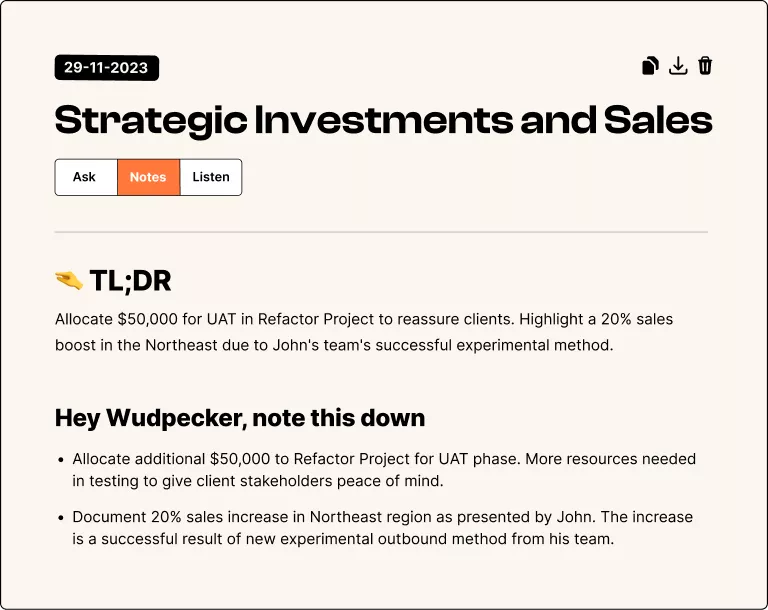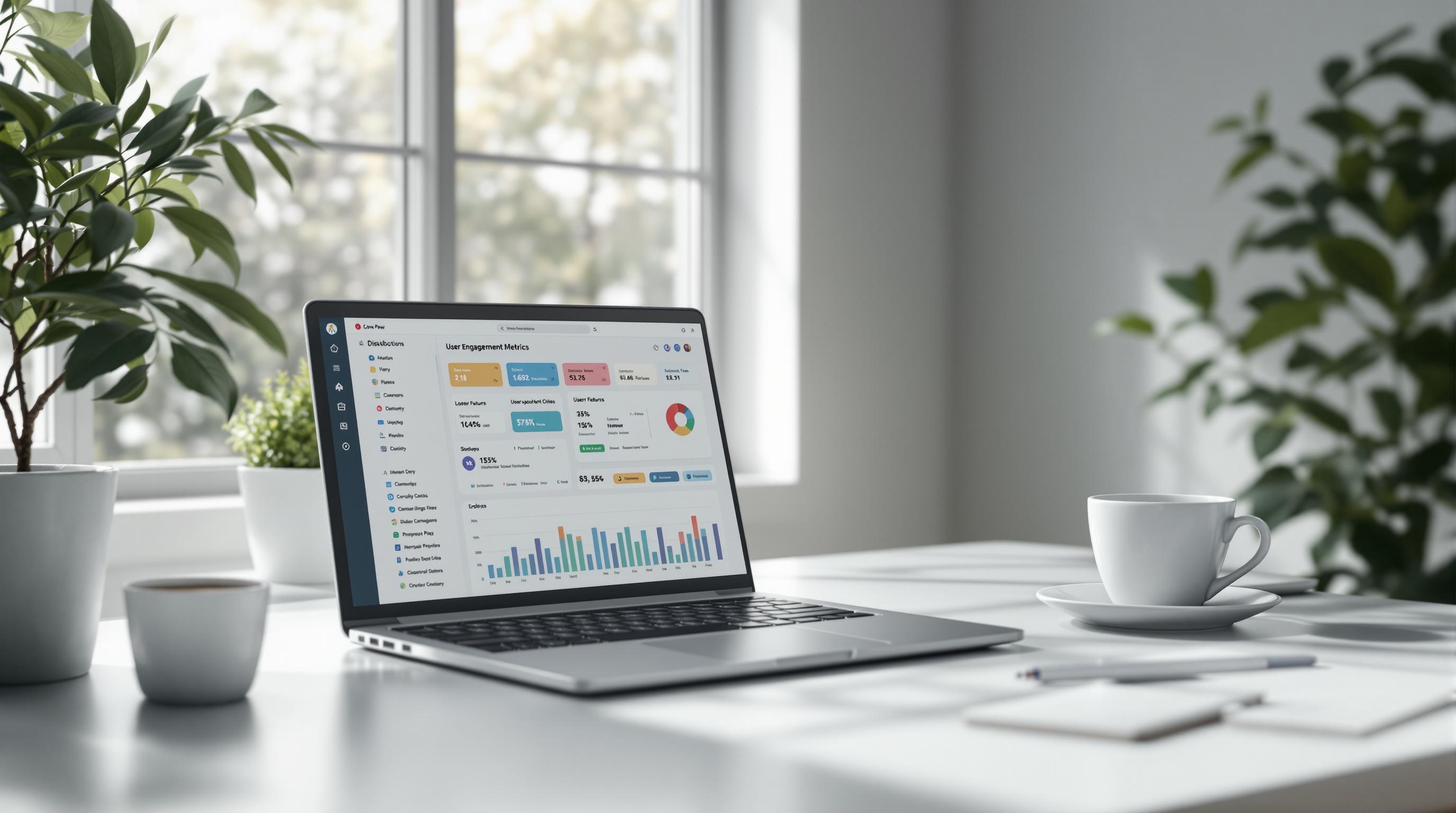Retention is the backbone of growth for B2B SaaS in 2025. With rising customer acquisition costs, businesses are doubling down on keeping existing customers happy and engaged. Here's what you need to know:
- Key Metrics: Top companies achieve Net Revenue Retention (NRR) of over 120% and Gross Revenue Retention (GRR) above 95%. Median NRR is 106%, while GRR sits at 90%.
- By Company Size: Larger companies ($100M+ ARR) lead with a median NRR of 115% and GRR of 94%. Smaller companies ($1M–$10M ARR) hover at 98% NRR and 85% GRR.
- Trends Driving Success: Data-driven strategies, better onboarding (+25% first-year retention), and high feature adoption (70%+ usage doubles retention likelihood).
- Retention Drivers: Frequent product use, strong customer support, and flexible pricing keep users loyal.
Retention Tip: Focus on personalized onboarding, routine customer check-ins, and tracking usage metrics like NRR and feature adoption. Use tools like Userlens to monitor engagement and prevent churn.
2024 SaaS retention benchmarks: How does your company ...
2025 B2B SaaS Retention Benchmarks
Here’s what retention success looks like for B2B SaaS companies in 2025 across various market segments.
Key Retention Metrics
Net Revenue Retention (NRR) continues to hold its position as the primary measure of success for B2B SaaS businesses. In 2025, the median NRR is 106%, with top-performing companies exceeding 120%. This reflects how well companies are growing revenue from existing customers, even after accounting for churn, by driving expansions and upgrades.
Gross Revenue Retention (GRR), which excludes expansion revenue, shows a median rate of 90%, with the top quartile surpassing 95%.
| Metric | Median | Top Quartile | Bottom Quartile |
|---|---|---|---|
| Net Revenue Retention | 106% | >120% | <95% |
| Gross Revenue Retention | 90% | >95% | <85% |
| User Retention Rate | 85% | >92% | <78% |
| Feature Adoption Rate | 60% | >75% | <45% |
Benchmarks by Company Size
Retention rates also vary significantly based on company size, reflecting different challenges and opportunities at various revenue levels.
| Company Size (ARR) | Median NRR | Median GRR |
|---|---|---|
| $1M - $10M | 98% | 85% |
| $10M - $50M | 105% | 88% |
| $50M - $100M | 110% | 92% |
| $100M+ | 115% | 94% |
Year-Over-Year Changes
Retention rates have seen noticeable improvements from 2024 to 2025, largely due to increased investment in product analytics.
Key trends influencing these changes include:
- Product-focused strategies: Companies leveraging product usage data report retention rates that are 15% higher compared to those that don’t.
- Improved onboarding: Structured onboarding programs have boosted first-year retention by 25%.
- Feature adoption impact: Customers engaging with over 70% of core features are twice as likely to stay compared to those with lower adoption rates.
What Drives B2B SaaS Retention
Several key factors play a role in shaping retention trends in the B2B SaaS space.
Product Usage Patterns
When users regularly engage with a product and adopt its core features early on, retention rates tend to improve. Teams that consistently use the product across various functions are more likely to stay satisfied and loyal.
Customer Support Quality
High-quality customer support is essential. Quick responses, efficient problem-solving, and proactive communication help build trust and strengthen user engagement over time.
Pricing Structure Impact
Pricing can also influence retention. Offering flexible, value-driven pricing models and scalable contract terms ensures that costs align with the benefits customers receive, making it easier for them to stay committed long-term.
These factors work together to create a clear roadmap for boosting retention in B2B SaaS businesses.
sbb-itb-6285ddb
How Long-Term Users Behave
Looking at how long-term users interact with a platform gives us a clearer picture of retention trends. These users consistently engage with the platform's main features and gradually take advantage of more advanced tools over time.
Usage Patterns
Long-term users show steady engagement with the platform. They typically start with the basic features and, as they become more familiar, expand their usage to include additional tools. Many eventually become "power users", actively engaging with a wider range of features. This gradual increase in usage reflects the importance of encouraging users to explore more of what the product offers.
Most-Used Features
These customers tend to focus on features that provide the most immediate and obvious value. Tools like workflow automation, detailed reporting and analytics, and team collaboration functionalities are often the most popular. Over time, as their needs grow, these users explore additional features that align with their evolving goals. With increased reliance on key tools, they also tend to work more closely with support teams to ensure they’re getting the most out of the platform.
Support Team Interactions
Rather than waiting for problems to arise, long-term users often reach out proactively. They seek advice, best practices, help with integrations, and information about new features. This ongoing collaboration not only deepens their understanding of the product but also strengthens their loyalty to it.
How to Improve Retention Rates
To keep customers coming back, focus on consistently delivering value at every stage of their journey. Here’s how you can build stronger long-term relationships.
Custom Onboarding Programs
A strong onboarding experience can make or break retention. Tailor your onboarding process to fit different customer segments and their specific needs. The goal? Help users achieve their first success within the first week.
Here’s what a tailored onboarding program might include:
- Set clear goals and track key activation milestones.
- Provide step-by-step guidance on core features.
- Schedule follow-ups at key intervals like day 7, day 30, and day 90.
This structured approach ensures customers feel supported and see value early on.
Regular Customer Check-ins
Staying connected with customers is key to addressing issues before they escalate. Plan your check-ins based on how customers use your product and their goals:
- Monthly reviews focus on feature adoption and usage patterns.
- Quarterly business reviews evaluate ROI and progress toward their objectives.
- Annual strategy sessions help plan for future needs and new features.
These conversations not only build trust but also give you actionable insights into how customers are engaging with your product.
Using Userlens for Usage Analysis

Userlens offers tools to track how customers interact with your product, helping you spot trends and potential problems early:
- Activity heatmaps show how different teams use specific features.
- Adoption tracking reveals how feature usage spreads across an organization.
- Early warning system flags declining engagement so you can act before it’s too late.
How to Track Retention
Once you've implemented strategies to boost retention, the next step is setting up a reliable system to track and evaluate your progress.
Key Metrics to Track
Keep an eye on these essential metrics to gauge customer engagement and loyalty:
- NRR (Net Revenue Retention) and GRR (Gross Revenue Retention): Measure these monthly. Aim for benchmarks like NRR at 120–130% and GRR between 85–95%.
- User Engagement Score: This score should factor in feature usage, login frequency, time spent, and task completion rates.
Setting Up Your Retention Dashboard
Create a dashboard that provides a clear view of retention trends and user behavior:
Cohort Analysis Panel
- Highlight retention rates over specific time frames (e.g., 30-day, 90-day, annual).
- Track renewal patterns across different customer segments.
Usage Trends Display
- Monitor active users daily or weekly.
- Track progress in feature adoption.
- Evaluate product engagement levels.
Health Score Indicators
Leverage tools like Userlens's activity heatmaps to identify:
- Engagement trends.
- Gaps in feature adoption.
- Shifts in login frequency.
Methods for Analyzing Retention Data
Use the following techniques to draw actionable insights from your data:
Cohort Comparison
- Pinpoint customer profiles that are thriving.
- Examine trends among churned accounts.
- Assess how effective your onboarding process is.
Usage Pattern Analysis
Dive into usage data to uncover:
- What drives retention.
- Milestones that signal successful adoption.
- Early signs of potential churn.
Customer Journey Mapping
Map out critical points in the customer experience, such as:
- Time taken to achieve initial value.
- The order in which features are adopted.
- Frequency of interactions with support teams.
Conclusion
Looking ahead to 2025, it's clear that using data-driven strategies for customer retention is crucial. The numbers reveal that companies excelling in retention are those that actively use data to understand and improve their performance.
The most successful companies share three key practices: First, they rely on advanced tools like Userlens to spot potential churn early and take quick action. Second, they prioritize personalized onboarding and ongoing customer success efforts, which boost engagement and strengthen relationships. Third, they regularly analyze product usage to guide both product development and customer success efforts. These approaches not only deliver short-term benefits but also contribute to long-term growth.
Retention is about more than just avoiding churn - it’s about creating a consistent value-driven experience for customers. By setting up effective tracking systems, staying in touch with customers regularly, and basing decisions on data, you can aim to surpass industry standards and build a more enduring business.
Start improving retention by evaluating your current metrics and setting clear, actionable goals. These strategies can help you create a stronger, more resilient SaaS business in 2025 and beyond.
Related posts



.svg)



















.svg)
